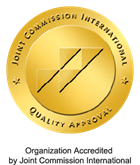
Osteoporosis Center
Osteoporosis is a chronic condition of bone metabolism in which there is a gradual decrease on their density and quality, making them more brittle over time.
This results in an increased risk of fracture even without injury (spontaneous fracture).
Osteoporosis can be: 1. Primary or idiopathic and affects women after menopause and people of both sexes over the age of 70, and 2. Secondary, i.e., due to an underlying disease, deficiency or medication.
Osteoporosis is a silent disease without symptoms until the first fracture occurs. The main manifestation of osteoporosis is fractures after minor injury or those that occur without a clear history of injury.
However, osteoporosis is not an inevitable consequence of aging. Nor is hereditary fatal.
The best treatment of osteoporosis is its early detection, that is, when it is still at the stage when the patient has absolutely no symptoms.
The diagnosis is based on history, clinical examination, bone density measurement, FRAX algorithm and general or specific blood tests.
Sufficient intake of calcium through consumption of dairy products, avoidance of smoking, alcohol and cola drink consumption, physical exercise and maintenance of normal vitamin D levels are usually sufficient for prevention during young and middle age.
However, after menopause as well as in elderly, these measures are not sufficient to prevent bone loss and, thus, medication may be required.
The drugs used to treat osteoporosis and increase bone production or inhibit bone resorption are estrogens, selective modulators of their receptors, bisphosphonates, denosumab, romosozumab, parathyroid hormone analogs, and of course calcium and vitamin D.

